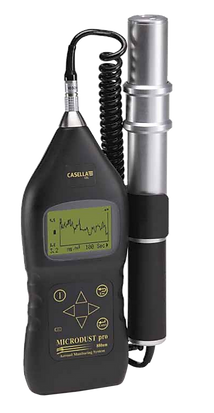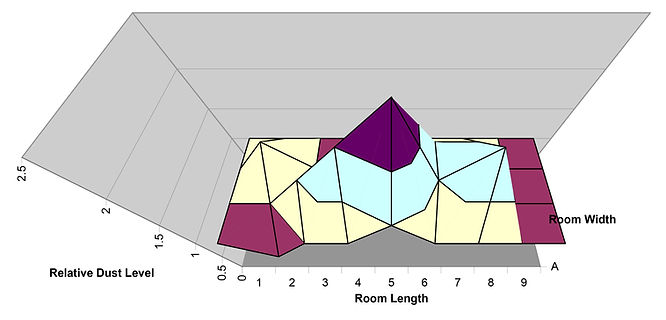Our Services
Dust Source Mapping
Dust Source Mapping™ is a procedure developed by Dust Extraction Technology® as an active real time tool to evaluate and diagnose fugitive dust levels in confined areas.



The information obtained from this “real time” sampling technique can be used to determine relative levels of fugitive dust generated in material handling applications by mapping out the overall dust levels in a room, and zooming in on specific areas that are suspect of being a fugitive dust source. The mapping procedure functions much like a “topographical” or “isometric” map and allows the plant to pinpoint problem areas and understand the dynamic properties of air movements within a confined area. This information can be used to make adjustments to the dust management plan to better combat the fugitive dust and to evaluate improvements that have been made in their dust mitigation efforts. Highlighted or suspect areas are identified as a “Possible Dust Source” (PDS) in order to develop a procedure for dust alleviation. Dust Mapping Technology was developed by NASA to identify dust movements on the earth using ‘land-sat’ imagery, and is a scientifically proven method to monitor and map dust sources for large areas. Dust Extraction Technology® has modified this approach and developed Dust Source Mapping™ technology to be used in plant related applications.
Objective
Dust Extraction Technology® is a leading manufacture of Dust Extraction Equipment with an objective of providing its customers the information and tools needed to make decisions that will improve their Environmental Operating Conditions.
Typical Results Analysis
A typical Topographical analysis of tabled readings taken on a live “real time” scale is shown below.
Recommended Grid Pattern:
Room Measurement on 10-foot grid spacing
Expanded Views normally on 2-ft grid spacing
DOWNLOAD
The Dust Source Mapping Technical Sheet
Sampling Method
Measurement Intervals: Real Time
Units of Measure: mg/m3
Dust Type: All Types
Measurement Pattern: Grid or Expanded Grid
Applications: Confined Areas
Method of Reporting: Tables and/or Density Maps
Accuracy: Relative Dust Readings
Setup Requirements: Physical Grid Pattern
Sampling Frequency: Dependant on Room Volume

*Fugitive dust loading conditions are influenced by many factors and may vary depending on site conditions at the time of measurement. DSM can be used to determine relative improvements, however it is important that conditional changes are noted and evaluated in each application.


